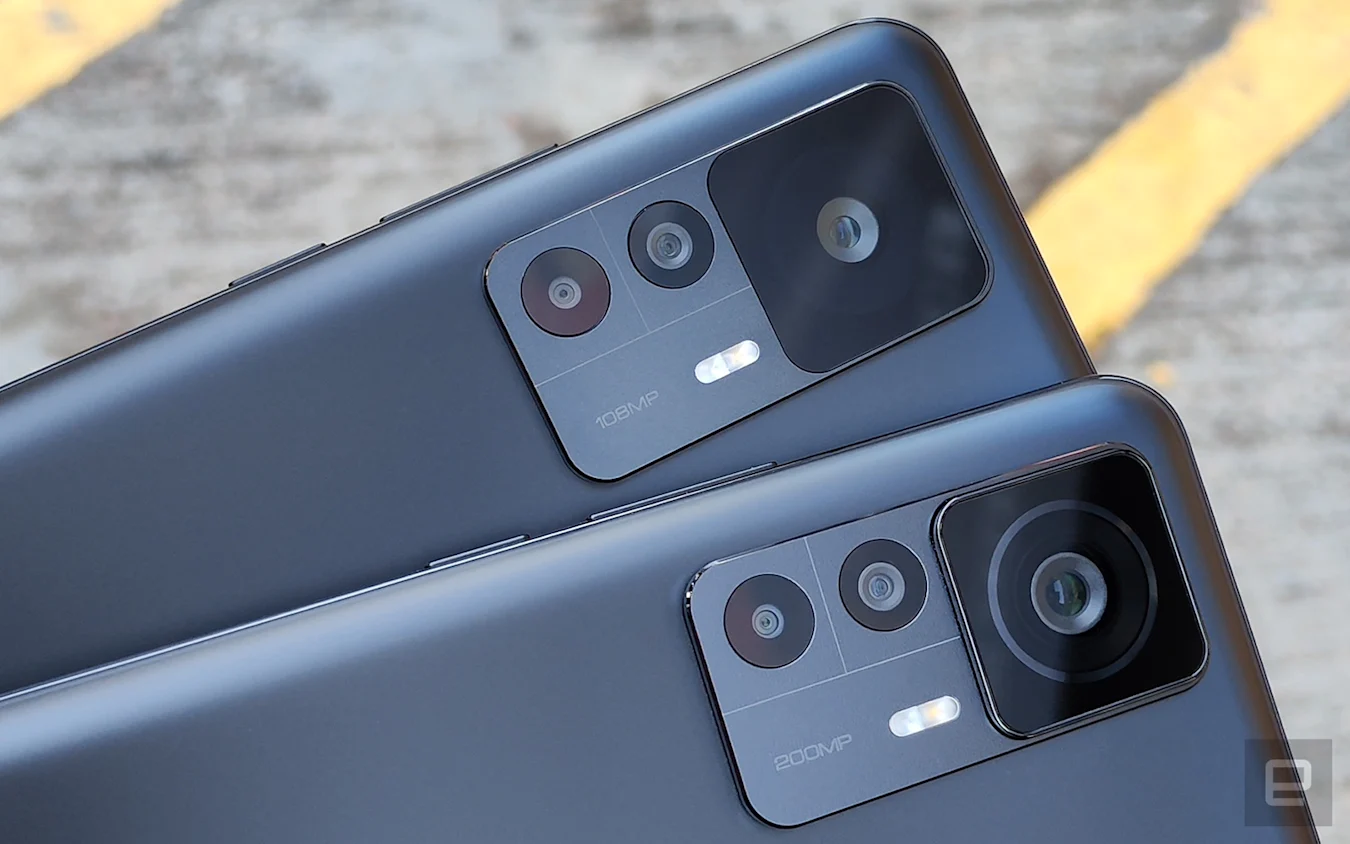
After debuting its first Leica-branded smartphones — including its super slim foldable phone — in China, Xiaomi is finally switching back to international mode with new flagships. The Xiaomi 12T series is comprised of two models, with the 12T Pro using Qualcomm’s Snapdragon 8+ Gen 1 processor and being the world’s second phone to pack a 200-megapixel camera. The 12T, meanwhile, utilizes MediaTek’s Dimensity 8100-Ultra processor along with a 108-megapixel main camera.
Much like the Motorola Edge 30 Ultra (aka X30 Pro in China), Xiaomi’s 12T Pro uses Samsung’s ISOCELL HP1 sensor to capture 200-megapixel stills. While it’s not as small as the more recent ISOCELL HP3, the HP1 is still able to offer features like 2x in-sensor zoom, 4-in-1 pixel binning to mimick 1.28um pixel sites for better sensitivity and 16-in-1 super pixel binning to simulate even bigger 2.56um pixel sites for dark environments. Should you choose to shoot in “Ultra HD” mode for 200-megapixel outputs, you can let the AI-powered “Xiaomi ProCut” tool to analyze those shots and suggest ideal compositions.
Additionally, this main camera has optical stabilization, and it’s also capable of motion tracking focus, eye tracking focus, 8K video recording and HDR10+ video recording. The other shooters on the 12T Pro include an 8-megapixel ultra-wide camera (f/2.2, 120-degree field of view), a 2-megapixel f/2.2 macro camera and a 20-megapixel f/2.24 punch-hole selfie camera on the other side of the phone. It’s the same list of cameras for the slightly more affordable 12T, except for the less powerful 108-megapixel main camera powered by Samsung’s ISOCELL HM6 sensor.

Oddly, there’s no Leica branding here. Engadget reached out to Xiaomi on this matter, to which a rep replied: “While Leica is a partner in our strategic imagery upgrade, they won’t necessarily contribute to every device.” Presumably, the Leica collaboration is currently limited to Xiaomi’s China-only phones, namely the Mix Fold 2 and the three models in the 12S series.
Both the 12T Pro and 12T have the same 6.67-inch AMOLED screen, with a sharp resolution of 2,712 x 1,220 (446ppi) at an aspect ratio of 20:9. You get an adaptive 120Hz refresh rate, with up to 480Hz touch sampling rate for better scrolling and gaming. The 12T Pro’s display comes with a few additional features, including Dolby Vision, adaptive HDR, adaptive reading mode and SGS Low Visual Fatigue Certification.
The 5,000mAh battery in both 12T models supports 120W fast charging, which apparently takes just 19 minutes to go from zero to 100 percent; and don’t worry, the charger and cable are included in the box. As with most flagship phones, the 12T series pack stereo speakers which support Dolby Atmos, though only the 12T Pro’s have Harman Kardon tuning. Other features include NFC, Bluetooth (5.2 on the 12T Pro, 5.3 on the 12T) and infrared remote. With the Android 12-based 12T series, Xiaomi is guaranteeing three years of Android OS updates along with four years of security patches.
The 12T series will be available in three colors: blue, black and silver. The 12T Pro starts at 749 euros (around $740) with 8GB of RAM and 128GB of storage, and the 12T starts at 599 euros (around $590) with the same configuration. Some regions may get up to 12GB of RAM and 256GB of storage, but one thing’s for sure: Xiaomi has already confirmed that neither phone will be headed to the US. The nearest they’ll come to the lower 48 will be Mexico, by way of Walmart and AT&T.
Author: R. Lai
Source: Engadget



